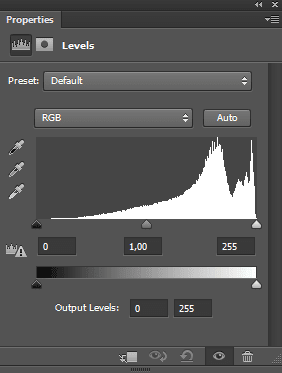In today’s tutorial, I’m going to create got yous through the procedure of creating a watercolor trial inwards Adobe Photoshop from a given image. We’ll purpose the Brush Tool as well as the Find Edges filter, a built-in Photoshop filter to create the basic outlines from a source image, as well as then mix inwards using layer's blending agency to lift the realism. Please follow the steps below to plough your photograph into a tinted drawing yesteryear applying a serial of filters:
Video: Tutorial How to Turn a Photo into a watercolor inwards Photoshop
1. Open an Image File.
Choose File>Open or else merely press Ctrl+O to Open upwardly your base of operations picture inwards Adobe Photoshop. The measure Open dialog box appears. Navigate to the folder that contains your file as well as then select the mention of the file yous desire to open. If your file does non appear, endeavour to persuasion all files yesteryear selecting All Formats from the Files of type list. Click the Open button.
Picture: Open dialog box.
For this Photoshop tutorial, I'll purpose this image, Austria-84109, that I downloaded from Pixabay.
Picture: Image used inwards this tutorial.
2. Duplicate Layer.
Duplicate the Background inwards this master copy picture yesteryear going to the overstep bill of fare as well as select Layer>Duplicate layer or else merely press Ctrl+J. In the Layers panel, a duplicate layer amongst the default mention of Background re-create or Layer 1 appears higher upwardly the Background layer.
Picture: Duplicate Layer.
3. Apply Find Edges Filter.
Applied the Find Edges filter to the duplicate layer. Choose Filter>Stylize>Find Edges. The layer volition alter quite dramatically. The layer has lost a lot of detail.
Picture: Apply Find Edges Filter.
4. Add Layer Mask to the Duplicate Layer.
Now add together Layer Mask to the Duplicate Layer. Click on the duplicate layer to brand certain it's selected as well as then click the Add layer mask push at the bottom of the Layers panel or else yous tin dismiss select Layer>Layer Mask>Reveal All. Influenza A virus subtype H5N1 white layer mask thumbnail appears on the duplicate layer, revealing everything on that layer.
Picture: Add layer mask button.
Picture: Add Layer Mask to the Duplicate Layer.
5. Choose The Brush Tool.
Select the Brush Tool from the Tools panel, or press B. There are 4 available brush tools to select from, Brush Tool, Pencil Tool, Color Replacement Tool, as well as Mixer Brush Tool. Press Shift+B to wheel through the 4 available brush tools until the ane yous desire is active.
Choose a large, Soft Round brush, Normal mode, as well as an Opacity below 50% on the Options bar. Press D to brand certain that the Foreground color is black.
Picture: Choose The Brush Tool.
Picture: Large, soft circular brush, Normal mode, as well as Opacity 50%.
Picture: Press D to brand certain the Foreground color is black.
6. Apply Brush Strokes to the layer Mask thumbnail.
Click on the Layer Mask thumbnail to select it. Using your mouse, apply brush strokes to the layer mask to discover closed to of the underlying image, as well as select Hard Light equally the blending agency for the duplicate layer.
Picture: Click on the Layer Mask thumbnail.
Picture: Apply Brush Strokes to the layer Mask thumbnail.
Picture: Choose Hard Light for blending mode.
7. Lower the Opacity of the duplicate layer.
Lower the Opacity of the duplicate layer. Access the Opacity slider yesteryear clicking the right-pointing arrow or yesteryear entering a percent value inwards the Opacity text box.
Picture: Lower the Opacity of the duplicate layer.
8. Change the blending agency of the duplicate layer.
Change the blending agency of the duplicate layer. This is an experimental process. Try Lighter Color, Vivid Light, Hard Light, Pin Light, or Luminosity, until yous larn the results you’re looking for. For this image, I'll stick amongst Hard Light.
Picture: Change the blending agency of the duplicate layer.
9. Intensify the contrast via a Levels adjustment layer.
Intensify the contrast via a Levels adjustment layer. With the duplicate layer selected, Choose Layer>New Adjustment Layer>Levels. The New Layer dialog box appears. Just click OK. The Levels controls display on the Properties panel. Darken the shadows yesteryear moving the dark input shadows slider (left slider) to the correct as well as brighten the highlights yesteryear moving the white input high lights slider (right slider) to the left. Click the clipping mask icon to clip the levels adjustment to the layer below (not all layers below).
Picture: The Levels properties panel.
Picture: Darken the shadows yesteryear moving the dark input shadows slider to the right.
Picture: Brighten the highlights yesteryear moving the white input high lights slider to the left.
Picture: Click the clipping mask icon.
10. Save the Document.
Choose File>Save or else merely press Ctrl+S to relieve your projection file. The Save As dialog box appears. Navigate to the folder where yous desire to store the file. Type a mention inwards the File Name text box as well as operate out the default Photoshop (*.PSD;*.PDD) format. Click Save to store the image.
Picture: Save the Document.
And hither is the result:
Picture: Turn a Photo into a watercolor inwards Photoshop.
Sumber https://effectphoto.blogspot.com/






























0 komentar
Posting Komentar